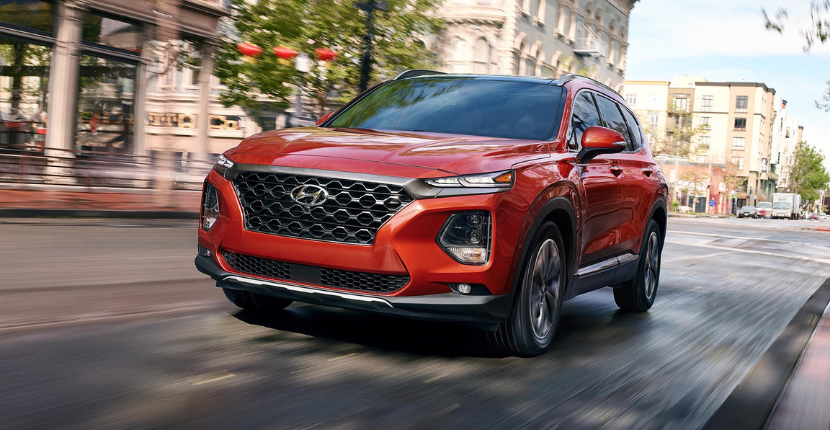Should I Sell It or Trade It In?
Tips for making the most of selling your used car.
An interview with Dominick Logan, Rosen Hyundai General Sales Manager
The first big decision you face before you buy a new car is, “What do I do with my old car?” For many people with a can-do spirit, selling their used vehicle themselves seems like the best option to make more cash.
But is it?
In this Q&A, Dominick Logan, Rosen Hyundai’s General Sales Manager, discusses when you should sell a vehicle yourself and when you should trade it in.
What do people have to keep top of mind when they are considering selling a car themselves?
You may get more money selling a vehicle yourself, but it takes a certain person to sell a car.
When you sell a car yourself you are essentially taking on the role of a sales person. You have to deal with strangers, talking with someone you have never met before. Not everyone is prepared for the questions and sometimes the low-ball haggling. Potential buyers may also ask for service records and question how you took care of the vehicle, which you might not have on hand.
You have to remember too that if you are selling a newer model or an expensive vehicle, say for $15,000, you will need the buyer to come up with a $15,000 certified check or cash—or financing. Not many people have $15,000 cash to throw around.
Finally, you also take on risk. Are you prepared to have someone meet you at your home? Are you prepared to make sure the person interested in the car has insurance if they want to test drive it?
In the end, you need to ask, “How much effort and time do I want to put into selling this vehicle?”
I have had customers sell a car in the past, but then their next car they say, “I don’t want to deal with the aggravation and people calling me all hours of the day. I don’t want the nitpicking and lowballing.”
Are there instances when the effort is worth it?
If a vehicle is 10+ years old (or $5,000 and under), it’s normally not a good idea to trade it in. A dealership will take it off your hands. But usually these cars have higher mileage, which makes it costly for the dealership to service to bring it up to standards to sell it. Also, the mileage might be too high for a dealer to be able to sell it for a profit.
The best time to sell a vehicle on your own is if you have a car $5,000 and under, because at that point, the person purchasing the car has lower expectations. They understand the car is going to have higher miles and a few blemishes. They simply are looking for a good commuter car: a good transmission, a good engine, an a/c that blows cold air, and a heater that blows hot air. Their mentality is if it breaks down in a year, they still got their money out of it.
Also, with a car selling for $5,000 or less, you don’t generally have to worry about the person coming up with financing.
What are the benefits of trading in the car at a dealership?
Benefit #1: the tax benefit. The value of your trade-in car is deducted from the sale price of the vehicle, and that will make a difference in the sales tax, depending on where you live. If you live in Chicago, taxes are 9.25%; in Cook County, taxes are 8.25%; and everywhere else is around 7%.
Let’s say a dealership values your vehicle at $15,000 and you live in a 7% sales tax area. That comes out to $1,050. That means you are saving $1,050, which you would be responsible for if you sold it yourself.
If you were to sell the car yourself, you would have to sell it for $16,000 to break even with what the dealership offers you.
Which is why the more expensive the vehicle the better idea it is to trade it in?
Exactly, the more expensive vehicle, the more you save on sales tax. That is why with a vehicle $5,000 or under the tax savings isn’t significant.
What are other benefits of trading in a vehicle?
If you purchased the car from the dealership you’re trading it in at (maybe it was your 2nd, 3rd, or 4th car from that dealership), they will reward loyalty. To retain you as a customer, they will be more likely to put a little more money in your trade in. They also have the benefit of the car’s service record–if you came in every 7,500 miles to get your oil changed, or did your 15,000 and 30,000-mile check-up—so they know the car’s history. This makes it easier for them to assess what they are taking on.
On top of it, a dealership takes on the risk of the vehicle. If you sell to a third-party person, and within days they call and complain about the car, you have to deal with the aggravation of finding a solution.
Are there certain questions a customer should ask prior to trading in a car at a dealership?
You should gain understanding of how they formulate a car’s value.
I don’t think customers understand the technology that allows us to immediately identify a vehicle’s worth. We can look up the model, and view every transaction by date of what a car of that year, make, miles went for. We can see how many are currently on the market, which lots, and how much they are selling for.
How does this impact pricing?
Say you bring in a 2014 Elantra with 30,000 miles, and I find it’s worth $10,000, but you think it is worth $13,000. A seller has to understand that we are looking at the retail price of $13,000. You can’t give a customer the retail price for their vehicle because the dealership still has to resell it.
They have to understand that a dealership has to put money into the vehicle so it meets standards. Certain things decrease the value of their car, most notably mileage to year. Average mileage per year is 12,000- 15,000. To recondition a car with high mileage usually entails replacing tires and brakes. If the car is going to be certified, reconditioning can be even more costly.
A customer might think this car is beautiful and perfectly maintained, but unfortunately dealers have a standard to uphold to get the car on the lot. And if there are multiple cars like yours on the lot, it will be more difficult to sell.




